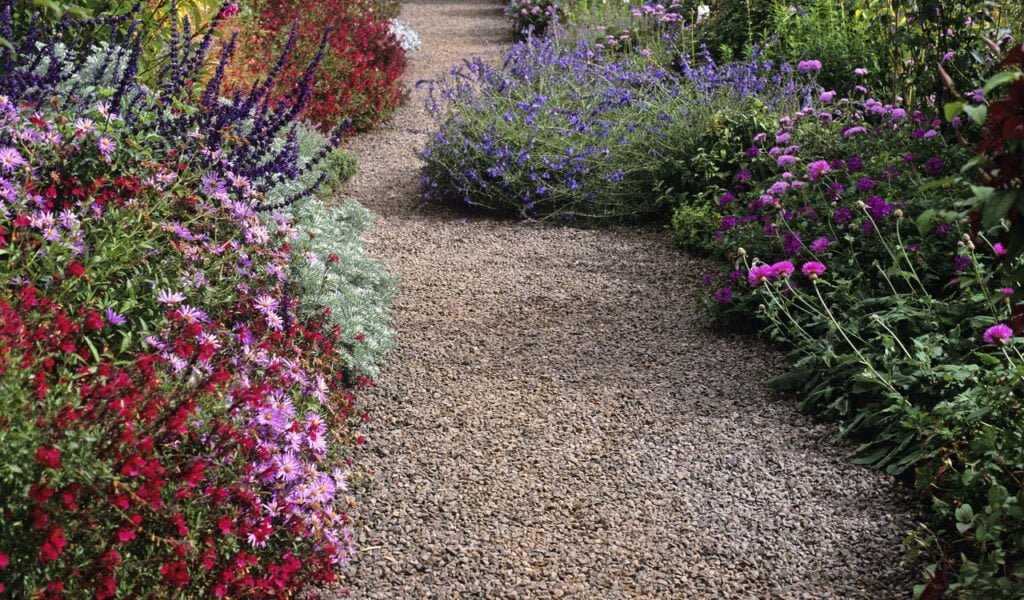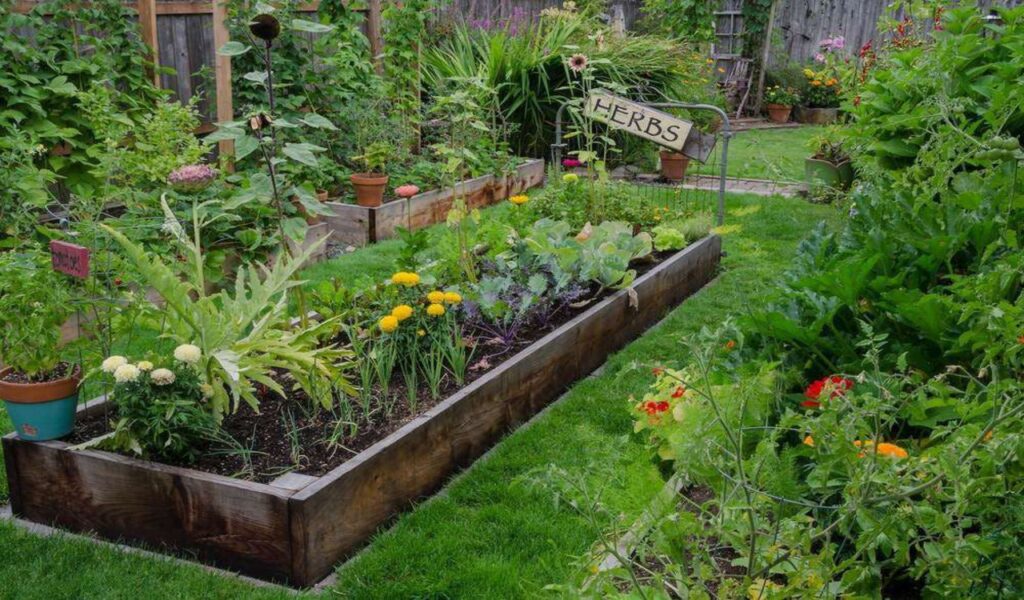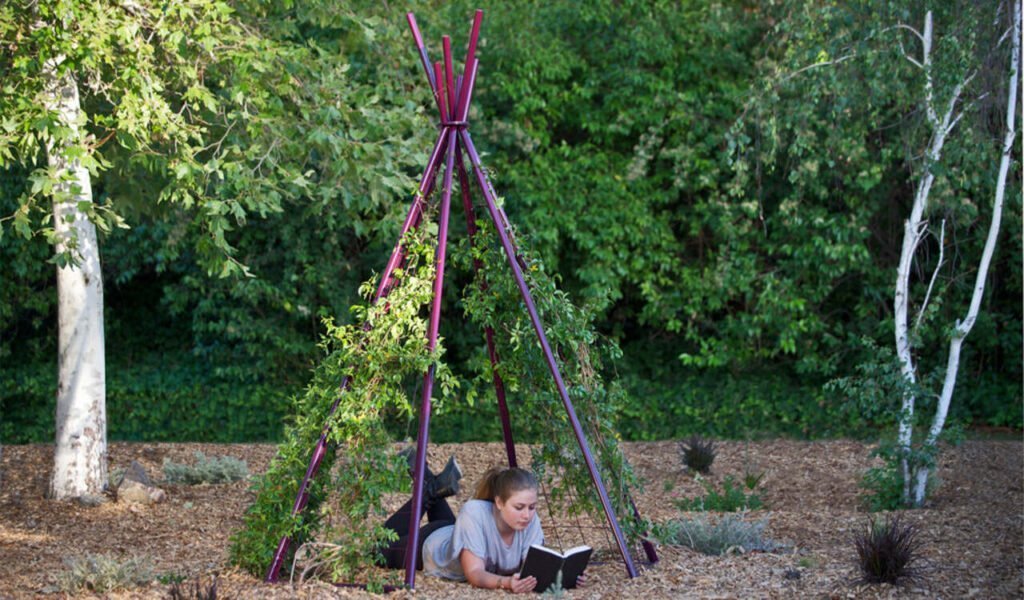Children are the future adults and the things they do, feel, think, and the way they perceive situations eventually affect their personalities as an adult. The only time designers give a thought to children-friendly designs, is when the space that is being designed, is going to be entirely used by children. For e.g., playgrounds, kindergartens, etc. It is of utmost importance to consider a child’s needs while designing a particular space. The comfort level and convenience of a child ultimately affect the way their parents or other adults would access the space.
The visibly obvious rise in using electronic devices by the current generation of kids and teenagers has led to a decrease in the attraction towards going outdoors. Also, since most of the things they need are so easily available online, especially post Covid, there is a certain level of disconnect with nature that is seen in these children. Kids below the age of ten can be seen entirely depending on their mobile phones or televisions.
Continuation of these patterns might affect the kid’s intellectual level as well their human relationships in the future. There is an obvious need to make their experience outdoors and get back in touch with nature. Children-friendly gardens might help attract them.
Accessibility of open spaces for the enjoyment of gardens in urban areas is quite less as compared to small towns. It isn’t always possible for the kids to be outdoors, considering the space crunch. In such cases, adding small natural elements in your front yard or your backyard might do the trick as well. The thought of summer vacations, visits to your grandparents, wind breezing in the backyard play area, making sand forts, ball games, and cycling is paradise. Nostalgic, isn’t it?
It has been a long ride from kids being yelled at to get back home, to being yelled at for keeping the phone aside. Let’s look into some ways to make the garden design more attractive and suitable for our kids.
Table of Contents
Ways to Make Your Gardens More Children-friendly
Making a Children-friendly garden design doesn’t require something out of the box or expensive toys. Some tree stumps, stepping stones across a lawn, either left plain or painted and decorated, would suffice as well. The painting can also add to the recreational activities for kids. Play equipment can be incorporated according to your kid’s age and choice. A turf for games or a slide can be added with sandpits and the bottom. Shrubs and flowering plants that are easy to maintain and can sustain some balls and trampling would be great for the kids. Use of bold, bright, loud colors like red, yellow, green, orange, pink, etc. are recommended.
The garden design should have a combination of hardscape and softscape. A certain amount of area should be paved or decked, on which they can cycle, scoot or roller-blade. The provision of a patio would be great too. Incorporate curves in the landscape design since they’re both leading to a path and also visually appealing to the children.
This can be an invitation to a variety of games and races. Visually appealing elements and visual connectivity will attract them to use these spaces like a pathway or paving lined with flowering plants or shrubs, lawns, ground cover, sandpits, furniture painted in loud colors, stepping stones, or rocks painted in cartoon characters, to name a few.
Other alternatives to make garden designs attractive for kids are using dustbins painted in animated characters, alphabet use, or numbers in a specific area like a maze, and child versions of sand equipment or gardening equipment. Forts, hideouts, mazes might increase concentration and build focus. Mosaic tiles can make large or small patterns on walls. You can also get inclined towards sustainability and attempt to make the best out of waste. Waste tires, tubes, or pipes can be painted in bright colors and reused for several activities.
Children-friendly Seating Areas

Keeping a setup of small low height tables and chairs with interesting patterns like stripes, bright and loud colors, polka dots, animations, cartoon characters, and attractive textures can be put in the non-shaded regions for providing a spot of rest to the kids. Multitasking furniture in the garden design is a plus. A wooden swing seat with its two posts fixed to the ground is a great option too. Who doesn’t love a swinging seat?
The use of different materials is recommended in landscape design. Make sure not to use metals that are good conductors of heat and electricity and might lead to inconvenience for the kids. Wood is preferable as it gives a rustic playful vibe with exposed joints and chalk-paint finish. Use of wooden logs inserted into the ground or obtained by chopping of trees might be a great way to provide seating to the kids.

Meditation Areas
Meditation areas can be provided in public gardens and home gardens. This will give rise to additional recreational activities like yoga classes and allow more quality time for the parents and kids together. This can either be entirely open, especially for morning activities, to enable absorption of sunlight or enclosed with some roofing material without walls, allowing ventilation.
A pergola might also work depending upon the geographical location and the climatic conditions of the place. A meditation area in garden design might just be the one thing you need before or after a hectic day at work or school.
Since kids’ lives have become more hectic these days, compared to the older generation, today’s kids have a lot more on their plates from a younger age. The kid must be in solace with nature with pleasant music. This enables a calming and healing environment and is necessary for the kid’s wellbeing. This might help lessen the emotional and physical stress from school and extracurricular activities and help the kid practice mindfulness and balance at a young age, which will affect their adult life.
Acupressure And It’s Benefits for Kids
A specific area in the gardens can be dedicated to being accessed barefoot to experience textures of all the materials. This area can have pebbles, lawn, sand, small stones, and ground cover. Provision of texture in a garden design is very essential for the kids. According to research, acupressure is of significant benefit for kids and young adults because of high QI energy in them as opposed to adults. Acupressure aids a lot of health problems in kids.
It can help with digestive disorders, sleeping problems, respiratory issues like asthma, allergies, and colds, hyperactivity, learning disorders such as ADHD, and anxiety, skin problems such as Eczema, Psoriasis, and Chicken Pox, as well as teenage ailments like Acne, PMS, sports injuries and depression.

Plants, Herbs, and Shrubs
Make sure the plants you are putting up, especially in a home garden, are children-friendly. Philodendron, Pothos, English Ivy, Easter Lily, Oleander, Daffodils, Dieffenbachia, Peace Lily, Mistletoe, Holly, Caladium, Azalea, Morning Glory, and Foxglove are some plants to avoid for your little ones to be safe. Shrubs in the periphery of a particular area will aid in visual connectivity instead of blockage by the trees.
An herb garden or a veggie patch can be maintained on your own premises. You can get the little ones more drawn towards gardening and this calls for a growing competition between kids! Giving them their own equipment, and acknowledging a portion of land solely for them and their plants might spark motivation and creativity for gardening. It will also make your landscape design more customized and unique.

Maze areas
Maze areas can be from start to end where the kid enters the maze at one end and comes out at another end. They can also be more like a treasure hunt, where kids are expected to solve quizzes at different checkpoints to find their way to the next level. Mazes in landscape design enhance children’s brain development, memory, and problem-solving, keep them active, spark creativity in them, and increase gratitude towards nature.
You can encourage the kid to talk about what they see, and how they feel about the surrounding environment, which will not only help their speech and vocabulary but also urge them to express themselves more. The sight of nature, the smell of fresh air, the crunching sound of leaves, and the feel of this atmosphere all provide a sensory experience to the kids by activating their sense of touch, smell, sight, and hearing.

Means of Exercising
The provision of cycle tracks in landscape design will make the kid be more in touch with exercising. This can create a daily routine for them. Trampoline is a great way to enable exercising as well. A sunken trampoline will prevent the kids from falling down. Rope climbing and climbing frames are also great ways. They can also be installed in your own backyard or indoors.
Building A Teepee Garden
Instead of an open chunk of land, putting up elements of roofing or partial roofing in garden design is always a better alternative. Playhouses, pergolas, canopies, umbrellas, and gazebos are some options to provide shade in the garden so it doesn’t get too hot on a sunny day or during summer seasons. Play tables with small seats or stools partially enclosed in pergolas might do the trick.
Kids love to have their hide-out place. There are teepees available in the market that can accommodate adults and children. They are also known as polycotton tents. Hanging teepees with canopy coverings that can be UV and water-resistant are also available. Mini teepees would work best for kids. This is will offer them their own den that is homely and comfortable.
Building a teepee garden will not only provide them with a cozy space, but also make them fall in love with nature. Tying up some bamboo poles together and covering it with climbers as shade will help. This is the most inexpensive way to have a teepee in your home. Also, building the teepee can be a fun activity for the parents and children together.

Water
For putting water features in kids’ garden design, parents are skeptical since it raises the question of safety, especially for kids under five. Considering some really unfortunate incidents of kids drowning in ponds, quite a lot of parents have chosen to either not have a water body or turn it into a sandpit until the kids get are old enough.
A fountain can be an interesting water body to put in landscape design. A bubbling fountain is both exciting and attention-grabbing for the kid. Placement of statues or sculptures is a common practice in water features. It reduces the risk level for children while giving an enjoyable option to the kids so they don’t miss out on the fun. Having fences around a water body might help increase the safety level. Another alternative would use water bodies with really low depth or really low water levels. Although these suggestions aren’t full-proof solutions, they’re definitely something one can try.
Sensory Gardens
Stimulation of senses is important for the wellbeing of a person. Doing that at a younger age will certainly have its own benefits. For the sense of sight, plants with flowers that have bold and bright colors like marigolds, nasturtiums, and sunflowers, or Swiss chard for its multicolored stems will help. The rustling of grass and leaves is amazing to listen to on a quiet day.
A variety of textures in garden design will encourage kids to use their sense of touch. A mixture of fun smells can be inculcated as well by the use of curry plants or chocolate cosmos. Growing simple herbs like chives and mint or a pot of strawberries are a great way to stimulate their taste buds.
Other Elements
Mud kitchens and playhouses might just be one of the easiest ways to get your kids out of the house. You can have a small setup of a mud kitchen with miniature utensils and spatulas. Organizing events such as skating, or boating competitions aside pons, or other water bodies, or go-karting, exhibitions, information sessions, etc. will help attract more public to the gardens which will get more kids out there.
Using rocks also gives a certain character to the place. The methods by which you can use rocks in a garden design are countless. The rocks can also be painted in upbeat colors and can be used for seating as well as boundaries for certain areas. Creating a themed garden might also help attract kids. The themes can be forest, music, ocean, rocks, shoe, airplanes, science, sports, flowers, etc. Scratch and Sniff Gardens are other options.





